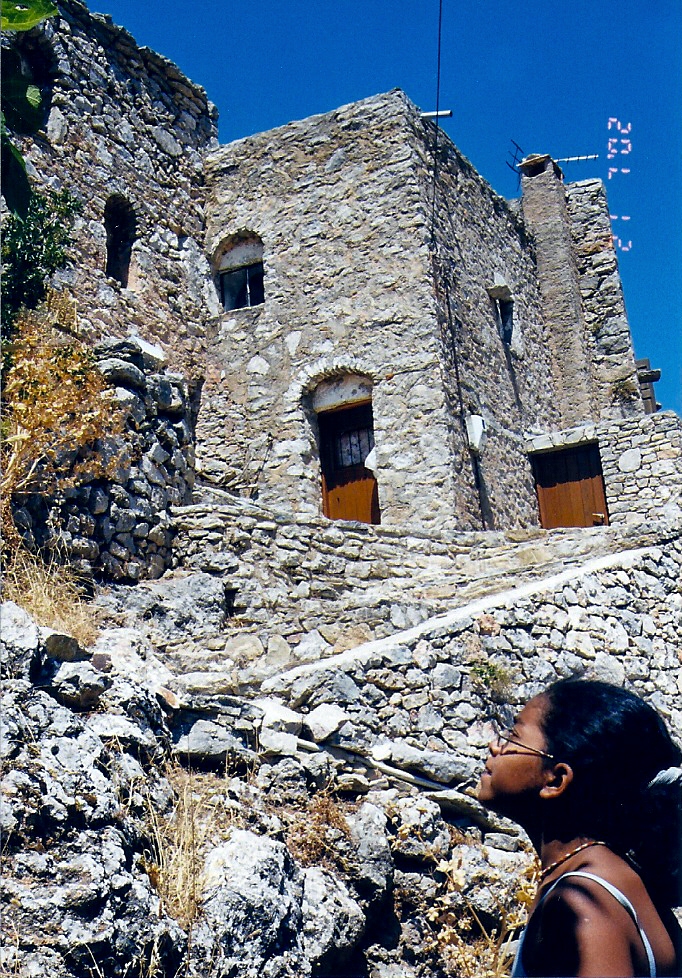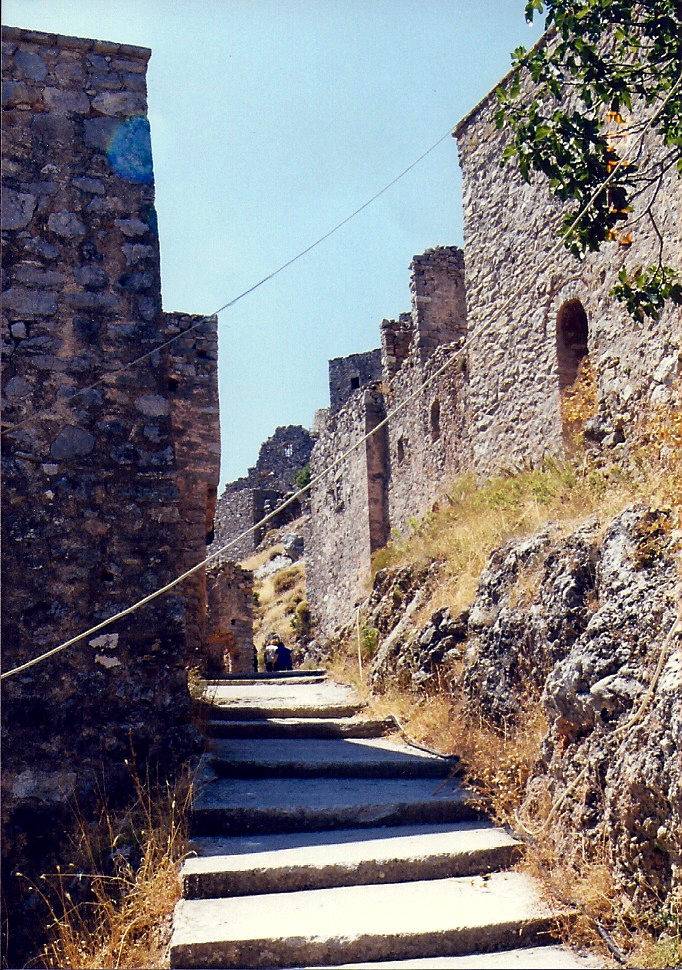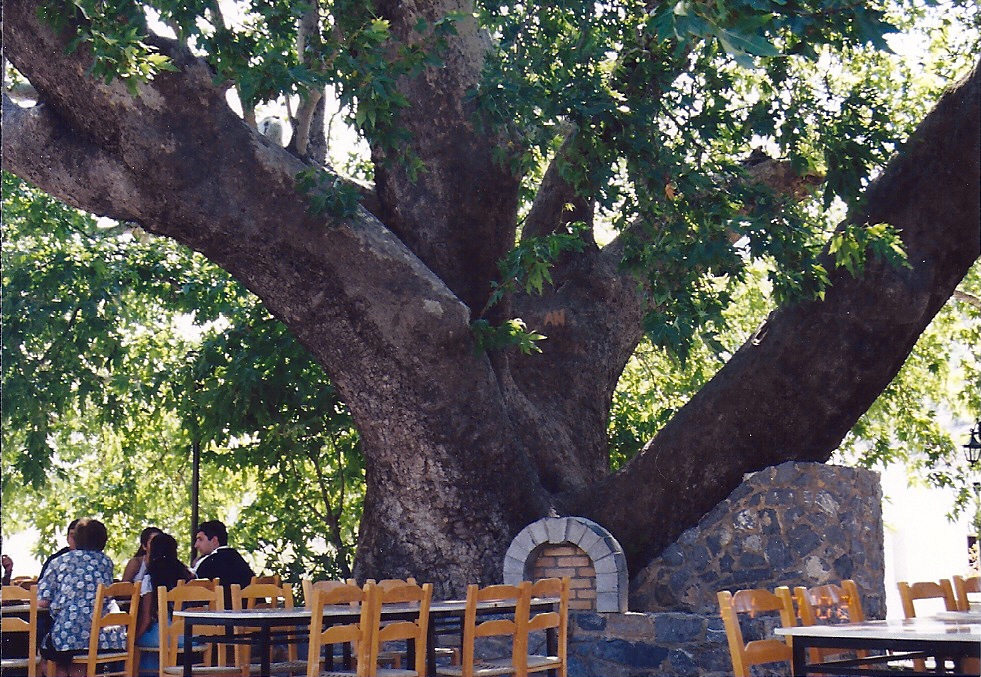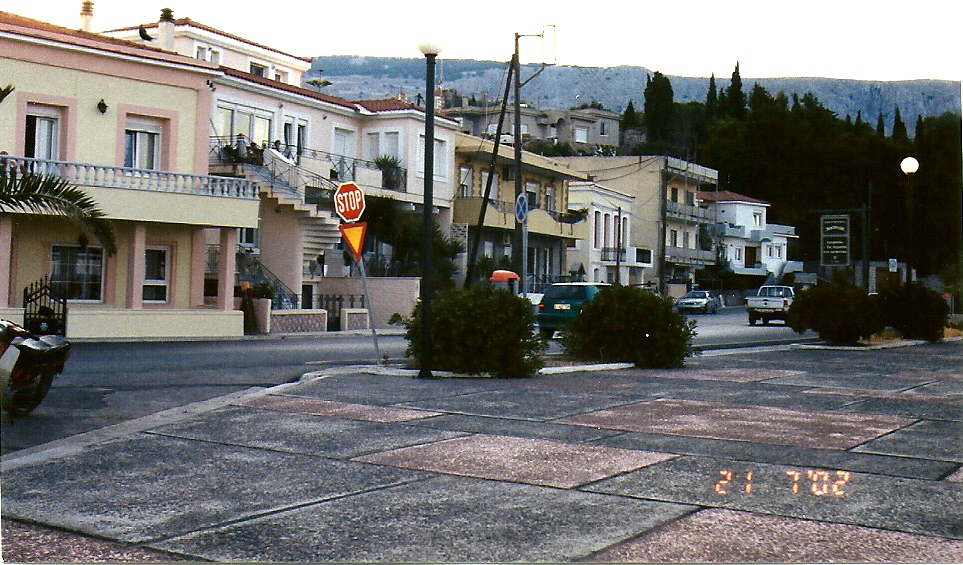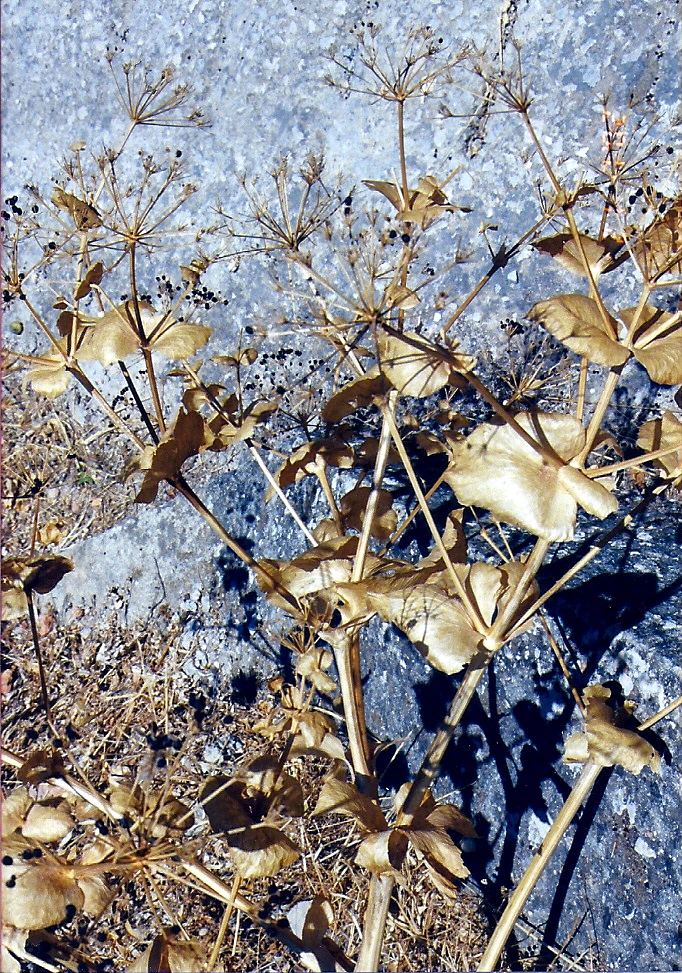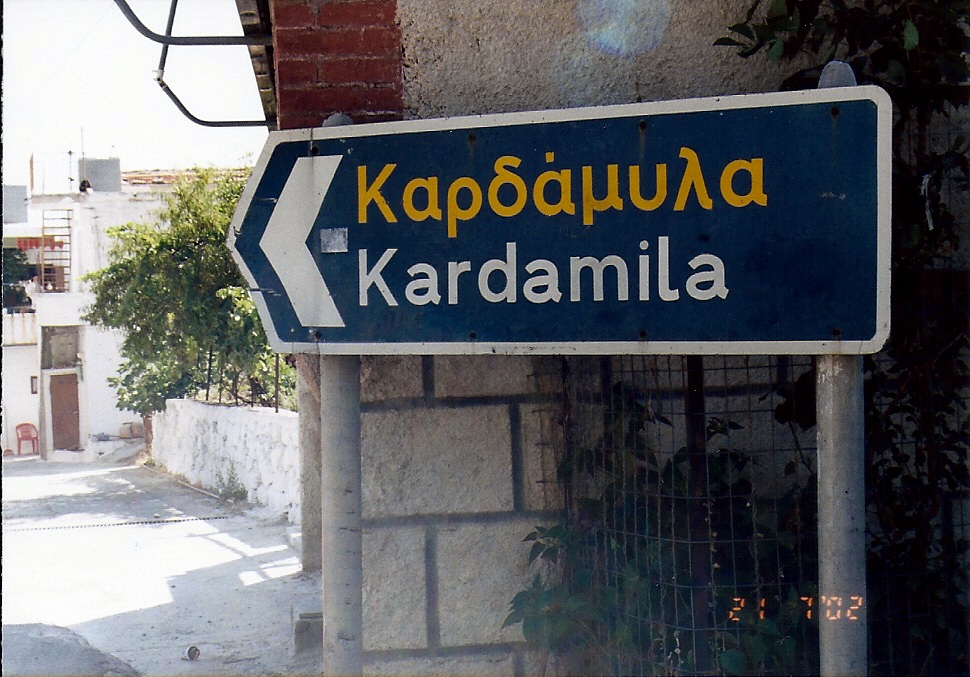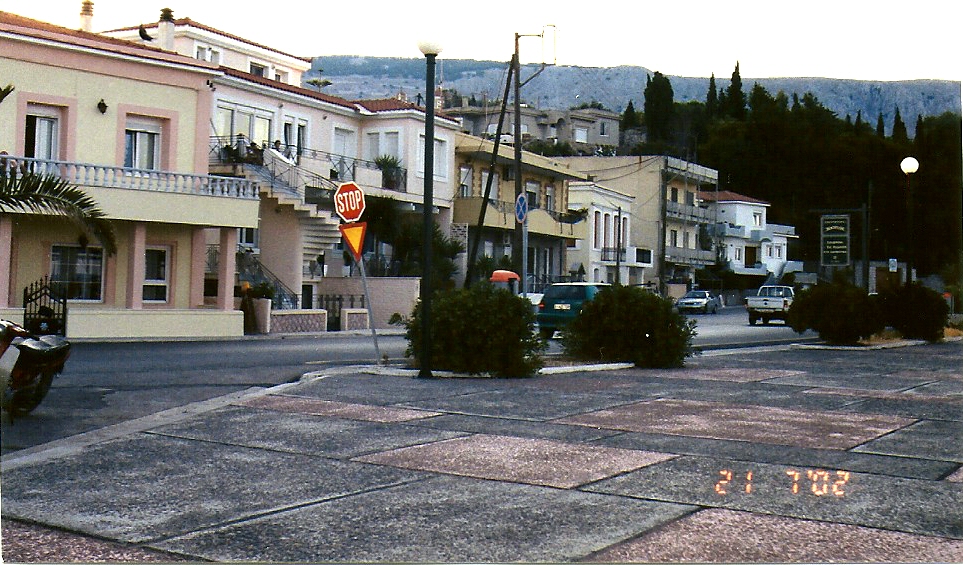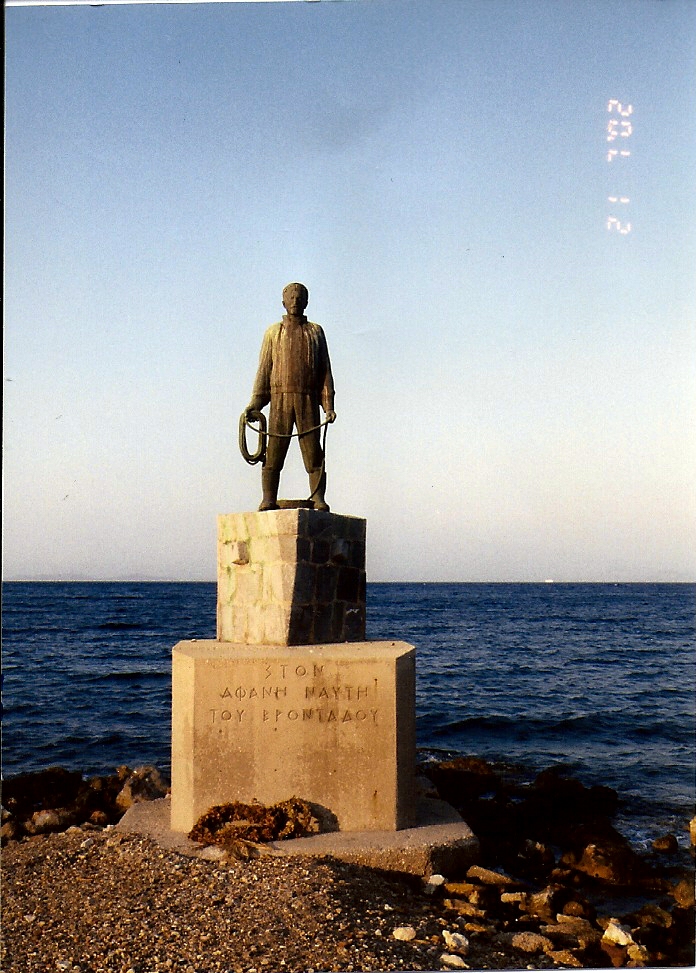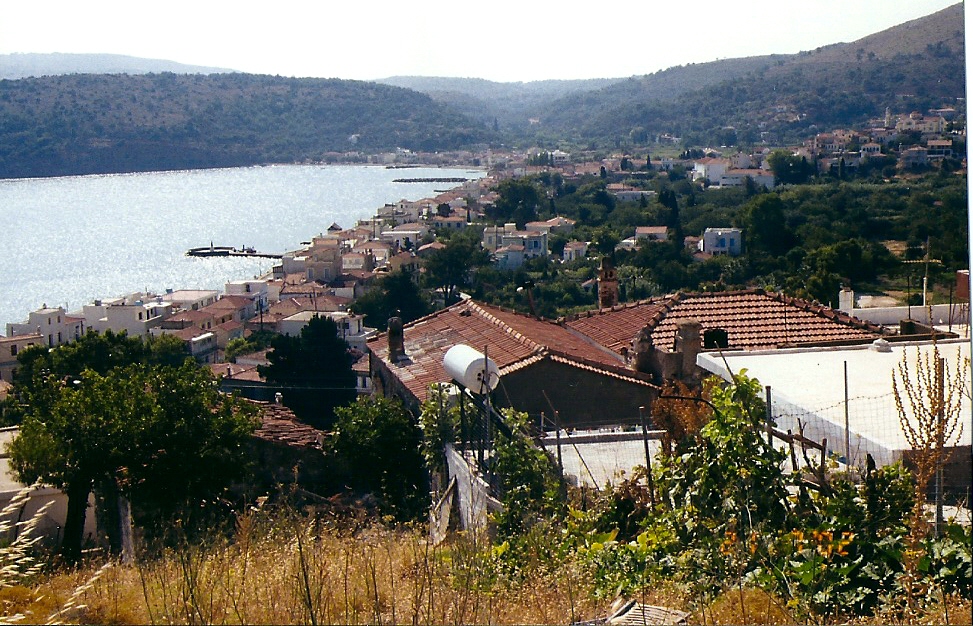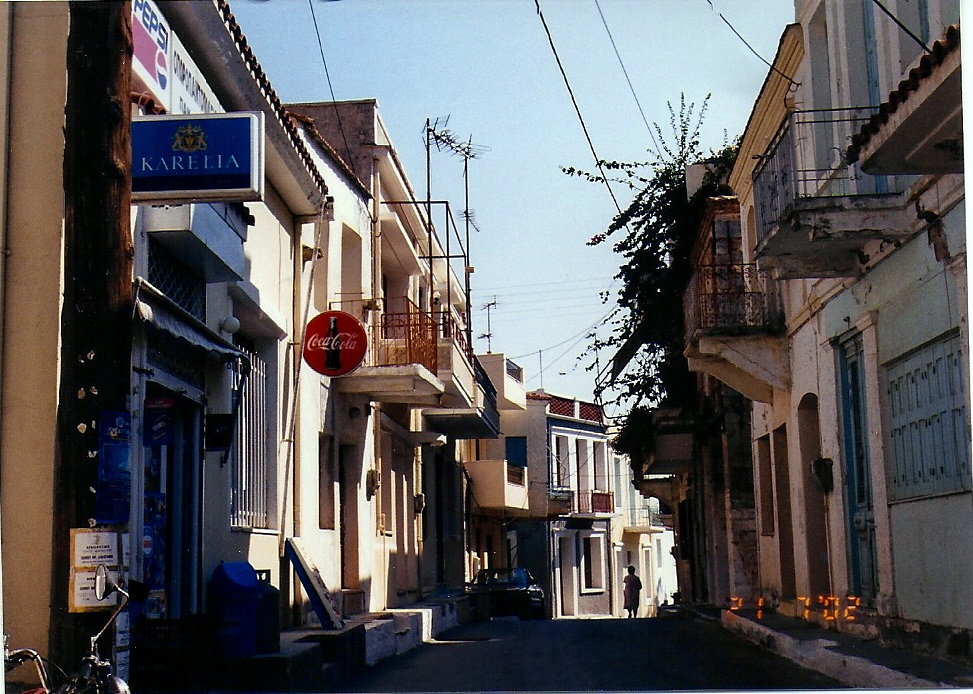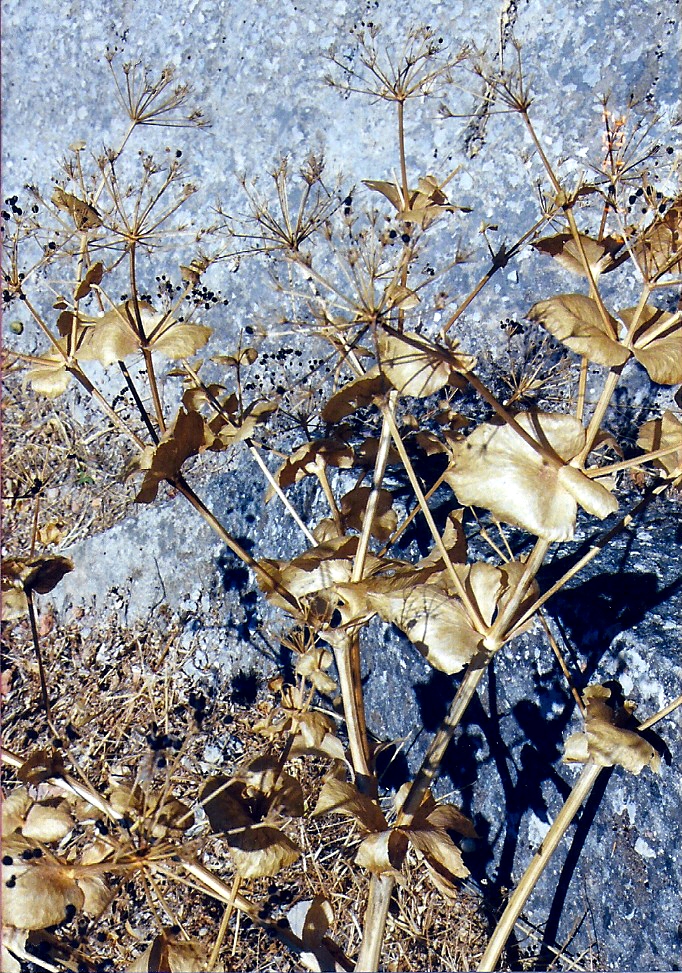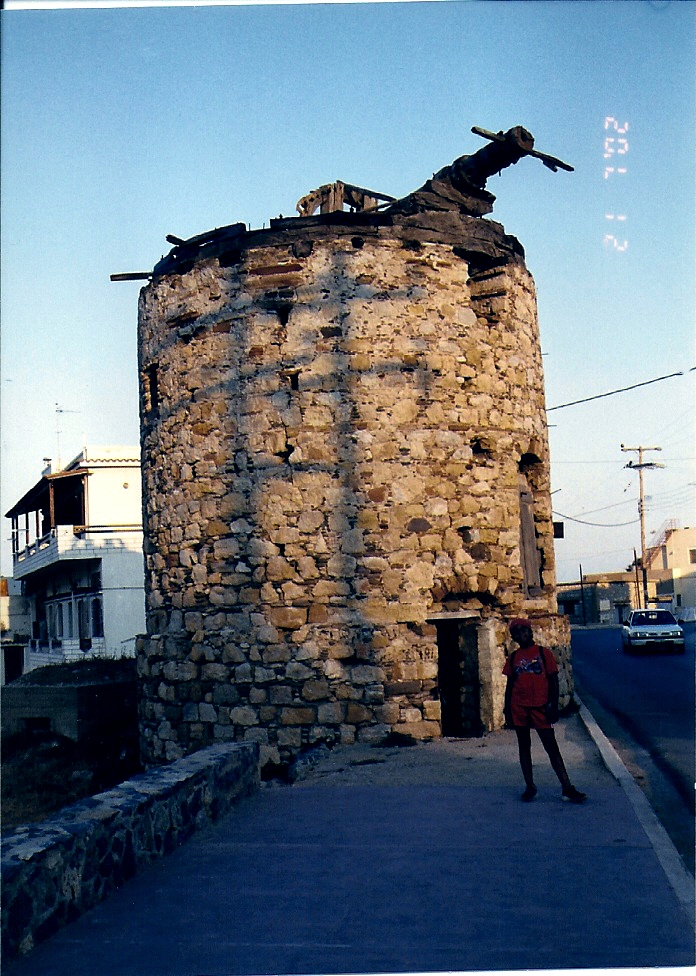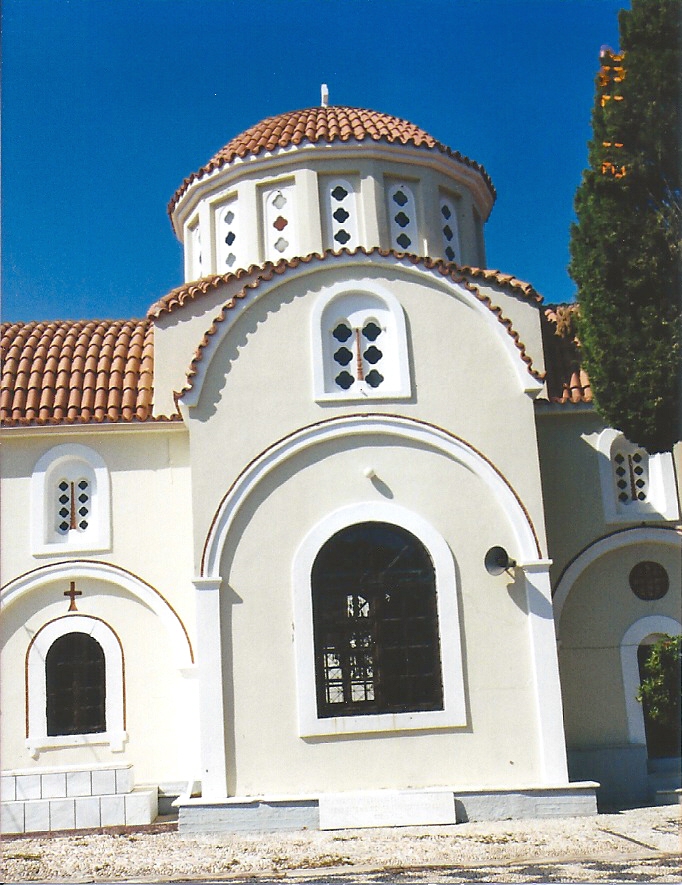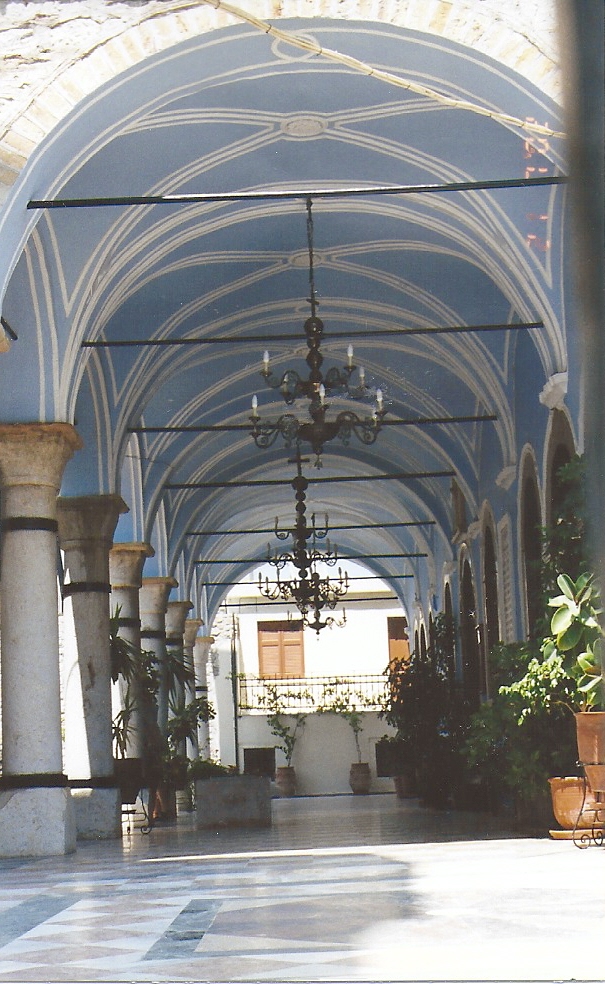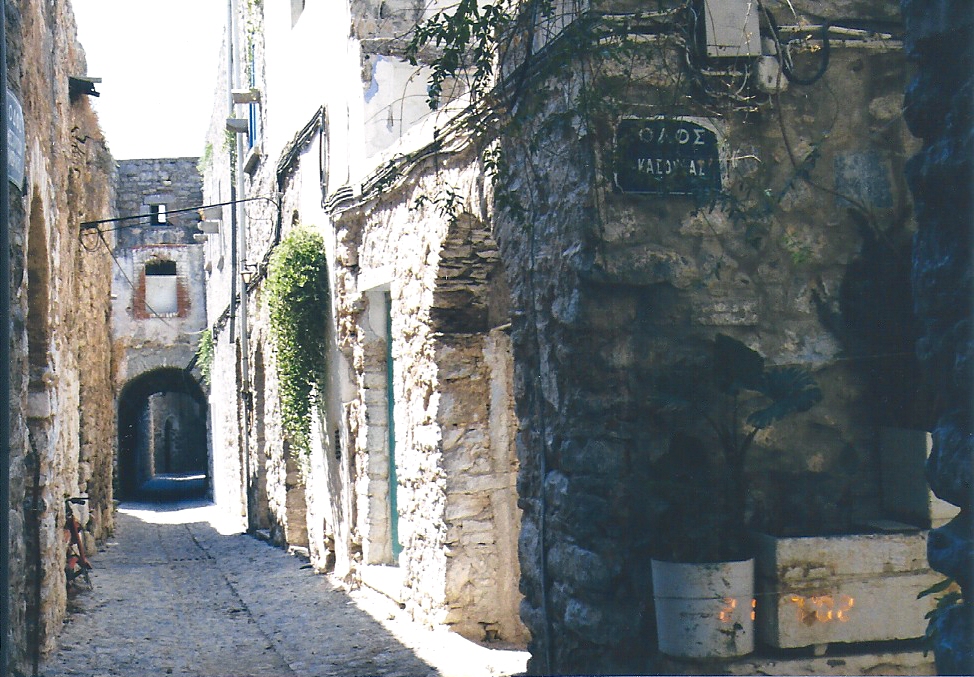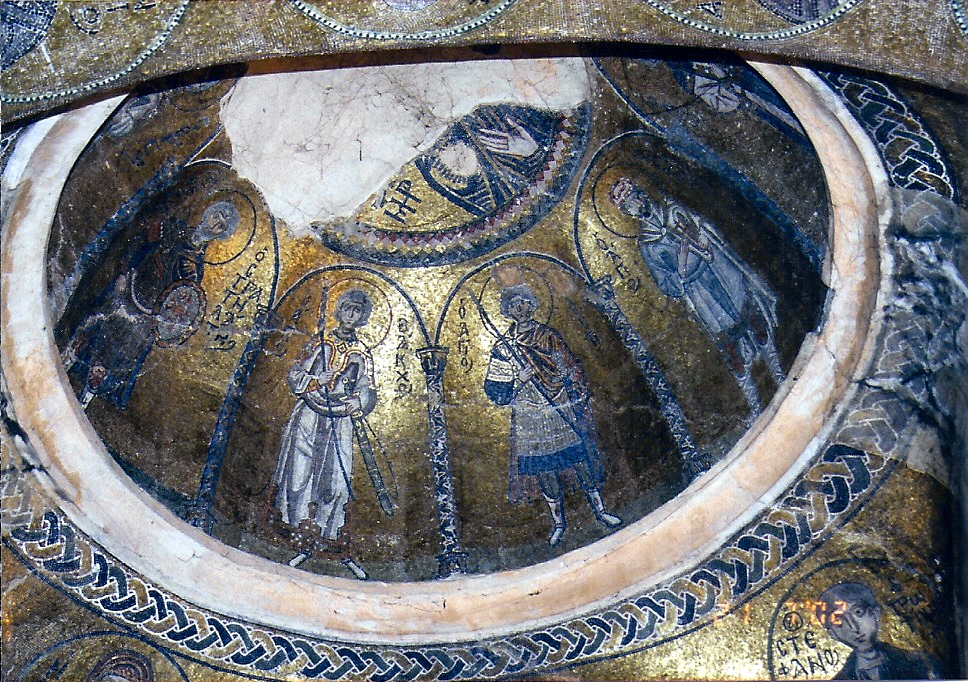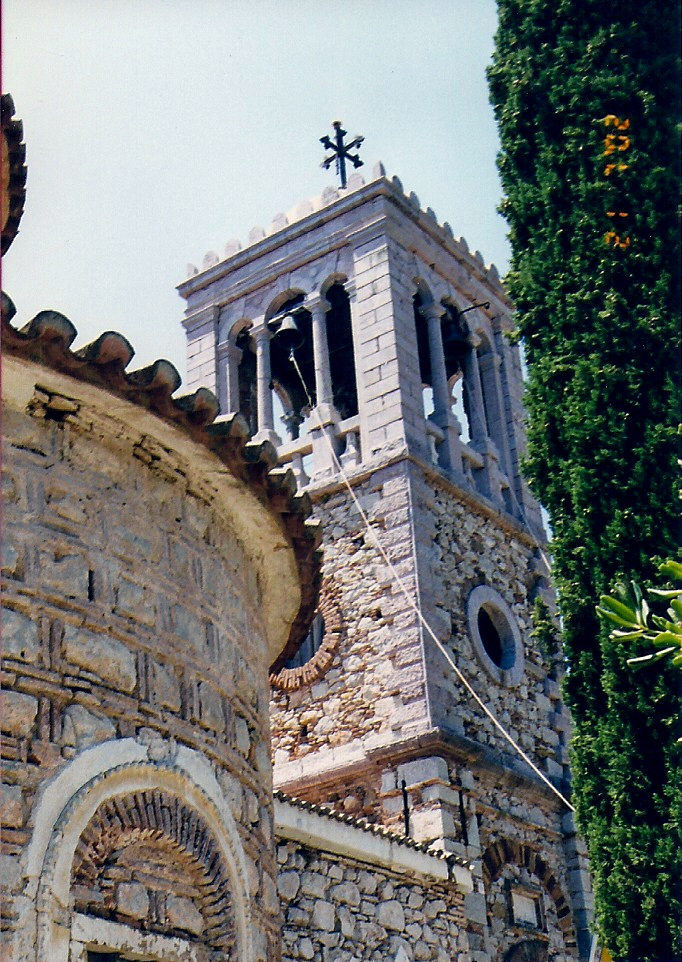Aug11
Tag Archives: Vrondatos
Nov2
My Big Fat Greek Vacation II
The airport in Rhodes was crowded when we left. There were mostly people from northern Europe and a lot of chain smokers. I changed my seat in the waiting area a million times to get away from the smoke. Phillip Morris will never go out of business. Those of you who are from northern Europe on my email list, I love you all, but I’m allergic to the stuff.
By contrast, the airport in Chios was crowded with Greeks. Our driver met us and took us to a hotel in Vrondatos which is right outside of Hora, the capital. The drive through Hora was interesting because it was busier, bigger, and more crowded than I realized it would be. There is a paralia (coastline in Greek). Here it is a place where you can walk for the evening or whatever. The paralia runs the length of the coastline and passes by waterfront, hotels, tavernas, shops, and two Internet cafes. (Information provided by Mike.) There are many boats of all descriptions in the waterfront and some medieval ruins. My favorites were the three windmills standing together in a row. Further inland is the fortress that once encircled the town. It is not whole like the one in Rhodes and the old town apparently was not preserved.
We arrived on the eve of the Feast Day of Agia Markella, the patron saint of Chios. The hotel where we stayed was also called Agia Markella, and it is an old fashioned hotel. The front (which you access by climbing steps!) is filled with large clay pots of flowers and a small, very blue pool. I can best describe it by calling it Old World. Chios is like that, too.
Our concierge informed us that a rental car was not available even though the poor woman made a lot of phone calls for us. The cars were rented because everyone was going to the Monastery that night and the next day, to worship. Instead we secured a driver who agreed to take us to Kardamyla, my mother’s birthplace, Nea Moni monastery, and the Mastihohoria (the “Mastic villages”). We decided not to go to Agia Markella monastery because my husband would not have enjoyed the zoo atmosphere created by the swell of people.
We decided to walk the paralia and look for a restaurant. We found two that had no patrons (no one eats dinner early, that’s why) so we decided to keep looking. I asked an old man if he knew of any. Before he could answer a woman overheard him and offered to walk with us to the nearest one. We chatted about Kardamyla because her aunt lived there but we didn’t recognize each other’s family names. Anyway, we reached the restaurant and had a delicious dinner. The dessert was provided by the owner at no extra charge: fresh plums and miniature pears (home grown, I’m willing to bet). PS: The owners were not relatives of the woman who took us there. (Surprise! No kick back!)
Our driver, Vasilis, picked us up on time (another first) the next morning and drove north through Daskalopetra (the Rock of the Teacher). We saw the (big) Rock of the Teacher which is where Homer taught his students. He was allegedly born there.
The drive along the coast was just as breathtaking, in my opinion, as the drive around Rhodes. The mountains are rocky and stark in their beauty and the sea below was a true blue. The sky was clear and the sun was hot and getting hotter.
We drove past many small towns and saw the small island of Inoussa off the coast of Chios which is where my goddaughter’s family is from. We didn’t go there but some day……We finally reached Kardamyla from the top which is called Pano (upper) Kardamyla. It is your typical village with stucco houses and narrow, winding (paved) paths. We passed the church which was celebrating the liturgy. The windows were open so that the men in the coffee house across the street could hear the service and have their cup of java at the same time.
Then we entered Kato (lower) Kardamyla which is our neighborhood. It is by the waterfront and so picturesque with the boats bobbing in the sea and the cafenia (coffee houses) lining the paralia there. As always, as I came to realize, there is the requisite bust of Some One Important to the Town. I didn’t chance to find out who it was but I saw my mother’s family house which sits partly in the water and partly on land. I don’t see how eight kids plus two parents ever fit in that house. We didn’t linger but took some photos.
Among the many horia (“villages”) that we saw was the village of Anavastos which sits on a mountain top. It can be covered by fog in winter and it is invisible from down below. It is surrounded by mountain tops that are higher than it is and that probably contributes to the invisibility. On top of the mountain a medieval fortress and the town which surrounded it are still standing. The houses are not the worse for wear. We stopped to look and take pictures and I bought rose petal preserves and home made honey. There are a lot of honey bee hives in Chios – little boxes which are often painted blue.
We also a saw a monument built in memory of the villagers who were killed by Turks during the War of 1821. Another village is a popular weekend destination for Chians. The houses are not stucco but built out of the rocks and stones of the mountains.
Occasionally, we would see an old man riding his donkey. This is something that you just don’t see frequently anymore.
We saw Nea Moni (New Monastery) from the mountain top and entered the property as we descended. It is surrounded by tall fir trees. The monastery is not in the best condition but it has an interesting history and a collection of skulls and bones of our Chian ancestors from the massacre. These are real and are housed in a chapel near the church. The blood stains are still evident on the floor of the church, too. Andrea saw a stray cat and befriended it.
There are dozens and more stray cats and dogs in Greece. We got some holy water for a neighbor and continued to the Mastic Villages. They were a lot of fun for me. The mastic tree only grows in Chios. Mastic is used for making gum among other things including a liqueur called Mastiha. (The best way to describe it is mastic flavored ouzo. Good for various ailments.)
The tree’s trunk literally glitters because the mastic comes from the sap of the tree. The younger the tree, the better the sap, and you can only harvest the tree a few times. Then you have to move on to another tree. In these villages the old medieval streets are better preserved although smaller than in Rhodes. We ate at an outdoor cafe which gave us a shot of Masticha liqueur on the house which was fresh and excellent. I haven’t tasted it in years. We bought a handful of souvenirs and walked round the old town. More stray dogs and cats.
(BTW, American and Chinese scientists have been to and are returning to the Mastic villages to research the possible cancer curing properties of mastic.)
Then we headed for the ceramic villages but we didn’t stop. Our last stop was St. Minas which also houses skulls and bones and the blood stains on the floor to the old church. The original edifice was burned down during another massacre.
Our trip lasted eight and a half hours. We circled the whole island and I think Vasili, our drive,r was wonderful. I think we wore him out. He was so informative and very professional.
That night we went into Hora to see the parade of people along the paralia and to eat dinner under the stars. The coast of Turkey is illuminated cross the water. The breeze alone is wonderful considering we were battling 95 degree heat during the day. Upon reflection, Chios is the real Greece, not Rhodes which is beautiful but overrun with tourists. (Although who really knows?) I overheard an old man complaining about them in old Rhodes city and he was right. But Chios is unspoiled and is still the Fragrant Island. (Our hotel even had a small orchard in the back.)
I forgot to mention two things about Chios. The beach near our hotel had sand as well as rocks and no nude bathers (!) We passed a town, Pyrgi, which was once the (temporary) home of Christopher Columbus. He married one of his two wives there. The outstanding thing was the architecture of the stucco buildings. They were painted with geometric designs and I did not see this anywhere else on my trip.
The next day we left for Athens. I said goodbye to my wind mills but I promised myself I would return. Even Mike said so! To be continued…

